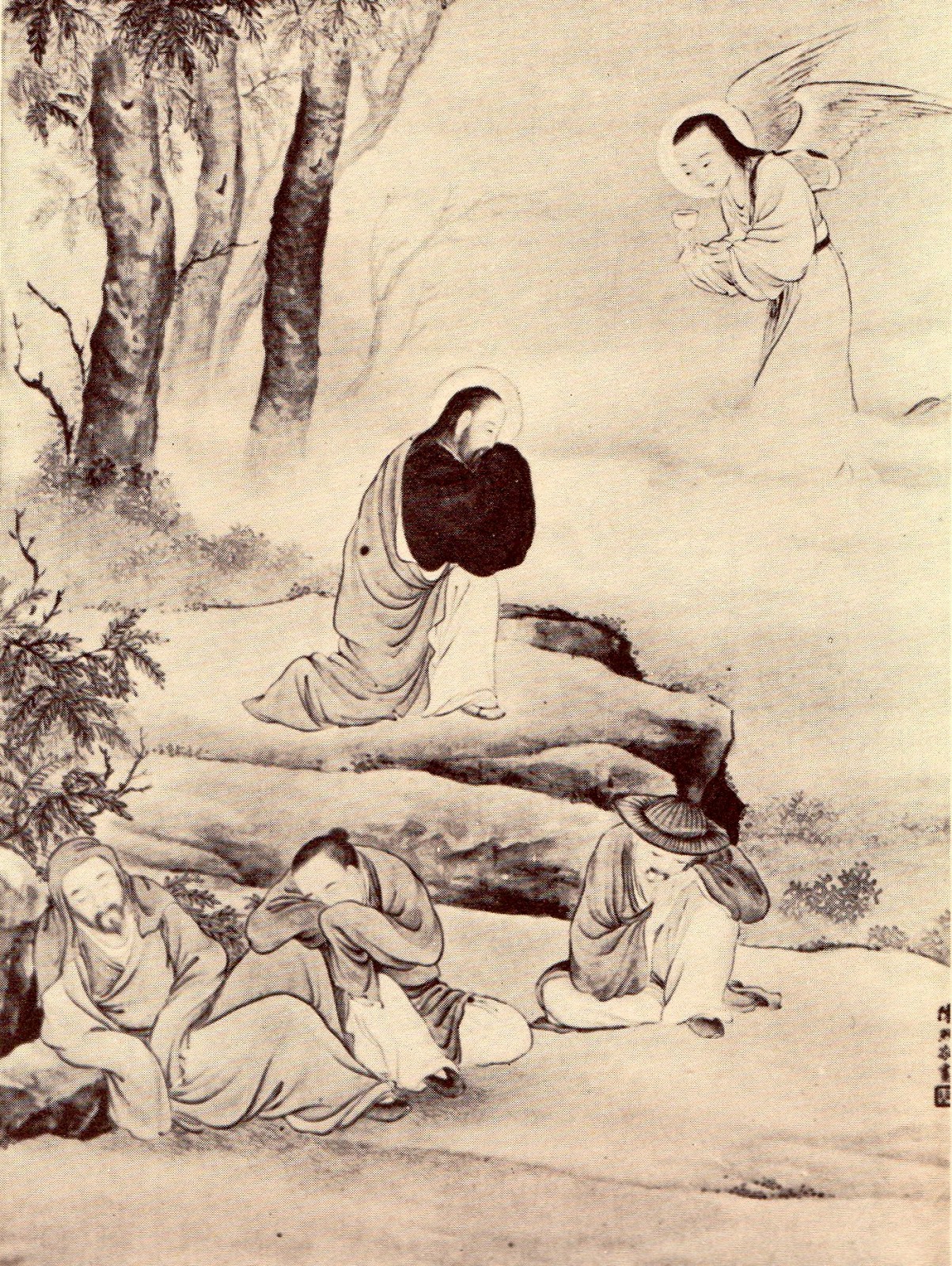 |
| The Agony in the Garden, 1590-1600, El Greco |
 |
Praying at Gethsemane,
Warner Sallman |
As we contemplate the Lord's final hours before Jesus' suffering and death upon the cross, we often focus on Gethsemane. Here there are, perhaps, half a dozen popular images upon which our minds often dwell. Again, Warner Sallman's
Prayer at Gethsemane (left) provides one of the most familiar.
El Greco's Agony in the Garden (top) from 1590-1600, is not so familiar, but being one of the first, was highly influential for later artists such as Holman Hunt in their quiet, highly contemplative depictions.
 |
| Jesus in Gethsemane, Hollman Hunt |
 |
| Jesus in Gethsemane, from Go Studio Nasional |
Though painful to see, the evangelical Go Studio Nasional depiction (above) is likely more scripturally accurate than most others, and certainly captures the agony in the garden more powerfully than most. The detail in Jesus Suffers in Gethsemane (below) by a contemporary Mormon artist emphasizes the tormented Christ along side the comforting presence of an angel from God.
 |
| Jesus Suffers in Gethsemane |
 |
Black Jesus,
Gretta Whitted |
Gethsemane, as with other depictions of Jesus, finds various ethnic artists tending to see their Savior as being like themselves, whether black, white, brown, oriental, or Native American, underlining the fact that Christ died for all mankind.
 |
The Garden of Gethsemane
|
 |
| Jesus in the Garden |
In looking at the two images below, it's amazing that the same scene, from the same source, could be so different as to style and rendering. In art, as in religion, the native culture makes a tremendous difference in how people see, Jesus. The real tragedy occurs when one culture sees "their" Jesus as somehow better than that of others.
 |
| Gethsemane, 1928, Luke Chen |
 |
| Gethsemane, 1954, Walter West (Native American) |
 |
Praying at Gethsemane, 1999,
He Qui (Chinese) |
The Native American painting by Walter West (above) offers yet another cultural interpretation of scriptural text. Cultural influences are not always so evident as seen in the work of Chinese painter, He Qui's Prayer at Gethsemane (left) from 1999. It is not so much Chinese as falling within the realm of an international, cubistic style more in line with Abstract Expressionism. Until recent years, the vast majority of all religious art has been realistic in style and narrative in content, placing spiritual values ahead of those having to do with art. In gathering visual material for this posting, most of it came from religious resources rather than those having to do with art. For centuries, that has tended to be the case as art was seen a nothing more than just another means of spreading the word of God. Postmodern artists are not unaware of this past functional element, but today, they also feel free to view spiritual themes as just one of many serving an inspiration function in support of their art.











Hey, Jim
ReplyDeleteI just found this blogpost while googling around for ideas and images about Jesus in Gethsemane. I'm a member of a church and its long range visioning committee, and we're dreaming of ways to embody our progressive, open and affirming values with our building and grounds. Our sanctuary is dominated by a circular stained glass window above the chancel of Jesus in Gethsemane roughly based on the Heinrich Hoffman painting. There are many among us who find it offensive and inconsistent with who we are. There are others who contributed to preserving and moving it from an older building, and, while they might not defend its portrayal of Jesus, it means something important to them. So, I'm imagining ways to think differently and more openly about it, more historically, more now-and-then maybe. Any thoughts? Any resources to suggest?
Jim Benton
Fort Worth, TX